LG's Optimus 7 & Samsung's Focus Reviewed: A Tale of Two Windows Phones
by Anand Lal Shimpi on December 3, 2010 10:14 PM EST- Posted in
- Smartphones
- Samsung
- Windows Phone 7
- LG Optimus
- LG
- Samsung Focus
- Mobile
The Screen, oh the Screen
With Android I found that larger screen devices made up for the shortcomings in the default Android keyboard. It's a big part of why I liked phones like the EVO and Droid X. Smaller handsets like the Nexus One were just harder to type on.
With Windows Phones, the exact opposite is true. The larger the phone, the harder it is to type fast on - at least for me. I make more mistakes on the Focus' 4-inch screen compared to the Optimus 7's 3.8-inch screen. I can type well on both, I'm just faster on the Optimus. If you have larger hands than me I can see the Focus being perfect.
Screen size is obviously just one part of the equation. While I believe LG wins there, Samsung easily takes the quality crown. The Focus uses the same Super AMOLED technology we talked about in the Epic 4G and Fascinate reviews. Super AMOLED layers the touch sensor directly on the AMOLED display, reducing glare significantly and moving the display closer to the face of the smartphone. You don't really notice the latter until you compare it with a standard AMOLED or LCD screen like LG's, but once you do it's a big difference.
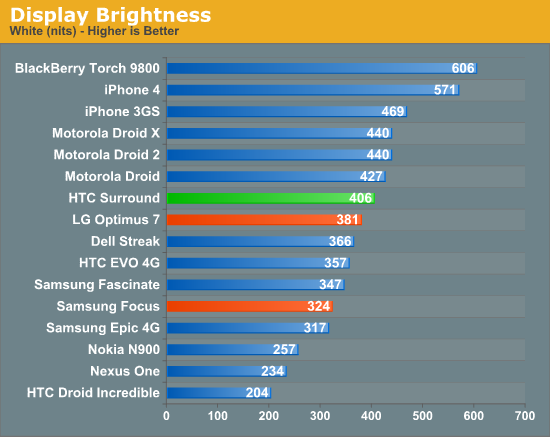
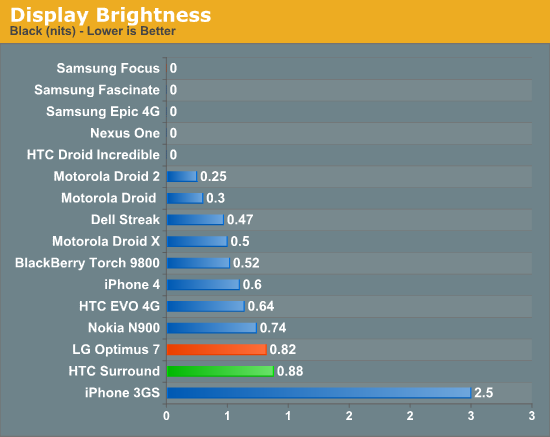
The biggest advantage the Focus has is in contrast ratio. AMOLED displays are truly off when displaying black, so you technically get infinite contrast ratio. Combined with Windows Phone 7's vibrant theme colors you get a phone that's extremely eye catching. While you don't get the pixel density of the iPhone 4, the display is arguably better to look at in my opinion thanks to the contrast ratio. Everything just pops.
Even visibility outdoors is improved thanks to the close layering of the touch sensor and AMOLED panel. Unfortunately the Focus doesn't get very bright so you have to keep the phone at full brightness for it to be useful in the sun.

LG on the other hand falls short in the display department. The TN panel used in the Optimus 7 feels dated by comparison. Colors aren't vibrant, the contrast ratio is sub par and viewing angles are terrible. If you're not looking directly at the phone blacks will appear grey and at extreme angles there's a lot of color shift. Usually when you're using your phone you are staring directly at it, but the poor LCD quality is noticeable if you've got the LG on your desk for example.
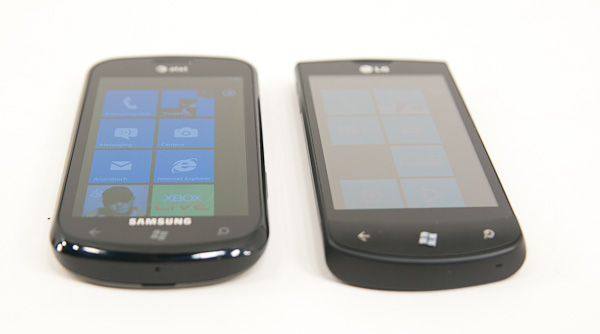
Samsung Focus (left) vs. LG Optimus 7 (right), note the poor viewing angle of the Optimus
I have no complaints about the Optimus 7's build quality or screen size, in fact in those two areas LG is ahead of the pack, but the LCD is a disappointment.


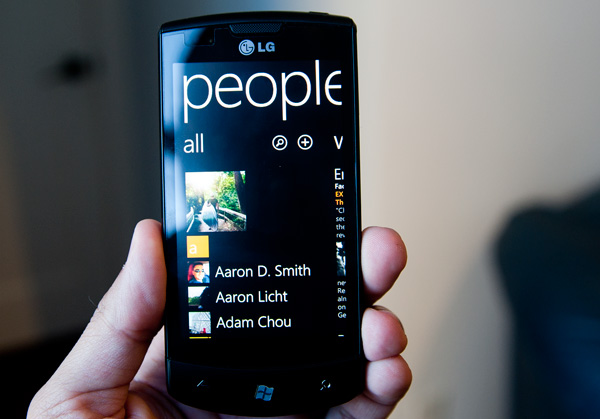
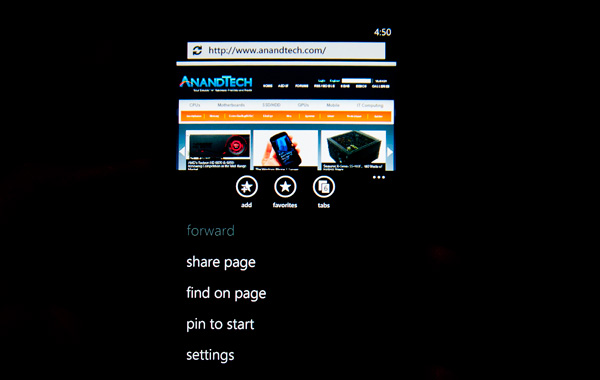








34 Comments
View All Comments
tonyfreak215 - Thursday, December 9, 2010 - link
You can pin a contact to the Main page. Just hold your finger on the contact and "Pin to start"EddyKilowatt - Monday, December 6, 2010 - link
During OLED's multi-year gestation, we saw lots of fetching display pics, though always with the text disclaimer "life of the organic emitters, however, remains a stumbling block".But now that products are on the shelves, the most penetrating journalism one can read about OLEDs amounts to, basically, "ohhhh... shiny!".
What is the backstory with OLED lifetime... was there a fundamental breakthrough that made it a non-problem, or was it merely increased "enough" that vendors think consumers will shrug and buy new toys when the old ones fade? Will today's eye-catching saturated colors look like old faded jeans at this time next year?
sviola - Monday, December 6, 2010 - link
Well, considering that people change cellphones in a 2-year schedule (usually when the plan is over), I don't think that the lifetime of the screen on a cellphone would matter much (2-year lifetime is around 17,5k hours if left on 24/7 - and I think Samsung AMOLED has a lifetime of 50k hours, which would translate to 5yr and 8mo of 24/7).xBabyJesus - Wednesday, December 8, 2010 - link
Anand, any chance you could do an update with read/write latency tests for a few flash cards? Apparently the sequential transfer speed (Class 2, 4, 6, etc) is pretty meaningless but the random read latency is make-or-break for Focus.